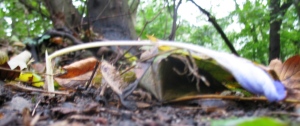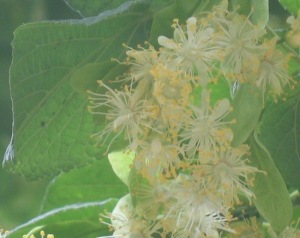Some blessed and enlightened gardener(s) planted up patches of one of my local parks with saffron crocus – Crocus Sativus and they flower for a period of two precious weeks at the end of October, each flower lasting just a day.
There are other autumn crocuses, from the colchicum family that flower earlier in September through to December, but they aren’t edible, (in fact some, such as naked ladies, are highly toxic – so be warned)…..the stamens are usually quite obviously different. True saffron crocuses have 3 stamens, whereas the colchicum family (as they’re really from the lily family) have 6, and the stigmas and stamens often (but not always) look very different. You want to collect stigmas.There is some difference in colour, from strong orange to deep crimson in true saffron – if you’re not sure, read a few reliable guides, but when stigmas are dry, the smell of saffron is unmistakable.
UPDATE – spent some time chatting to a gardener who specialises in native British planting the other day, and he told me the stigmas from colchicum family can also smell of saffron when dried, as they also contain safranal – the best way to exclude a poisonous naked lady is to check for leaves – naked ladies don’t have any when they flower (they produce leaves in the spring, when they sometimes get mistaken for wild garlic – which is when most cases of poisoning occur – sometimes fatal). Crocus leaves are long thin spikes, darker than a blade of grass and slightly glossy. I went to back to the park to take a better picture, but the municipal gardeners have mowed 😦 however, found some naked ladies planted in the local ecology park so have posted a picture at the end of this post. Saffron is always planted by humans, whereas naked ladies also appear in the wild, especially in the southwest of England.
Now, if you were a saffron farmer, or growing some in your garden, you would be up at the crack of dawn to harvest your gold (it is the most expensive spice on earth), but I tend to go later in the day – it gives other creatures a chance to share the bounty and it doesn’t effect the quality dramatically and as the flowers are delicate, you don’t need to panic so much about ruining them. I tend to use a pair of tweezers if I remember them, but fingers can be used with care;-)
As with some wild mushrooms, the flavour gets stronger as the stigma dry – I place mine in cigarette rolling papers as I pick – use a similar sort of paper as tissues would absorb too much of the precious flavour.
One of the golden rules of foraging is never to take more than 1/10th of what you find, and while saffron doesn’t depend on pollination as it doesn’t produce seeds, please don’t be greedy if you find some – the earth is a common treasury for all;-)
Personally, I love love love saffron, but I usually collect about 30 stigmas – enough for 4 or 5 dishes a year – it’s a luxury and it would somehow feel sacrilegious to treat it with less than reverence. If I need more, I buy it.
Bulbs are available for sale (and get planted) from June – you can earn serious brownie points with your favourite gardener for the price of a few bulbs. I’m not sure how far north they flourish in the UK – see the wikipage for growing conditions .
If you have to eek out small amounts of saffron in a recipe, I recommend you augment it with anatto seeds (from the lipstick plant) soaked in hot water or brown onion skins boiled in water, as they both give a lovely colour and no discernible flavour. Turmeric, while a lovely shade of yellow and a brilliant spice in its own right, has a very strong flavour which will annihilate your saffron.




